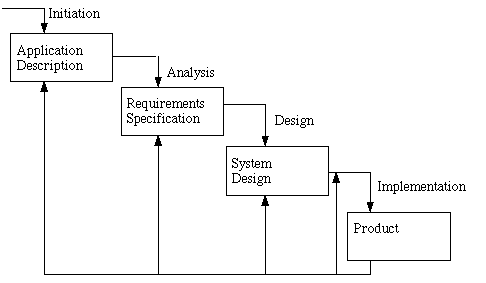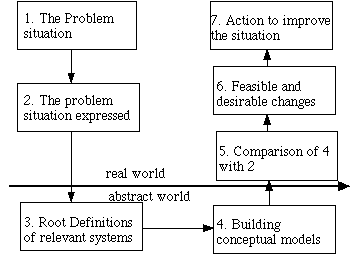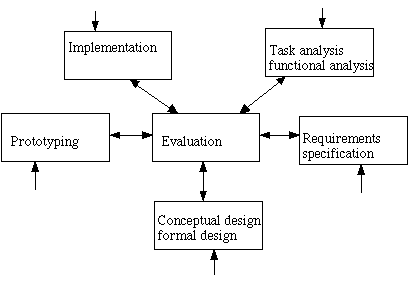5. Design methods
(Preece: Chapters 17,18)
This chapter deals with design methods suitable for the design of interactive
systems - human centered desing. The basic principles of information system
design are of course valid here. We take a look at traditional waterfall
model of system development and also at some more user oriented principles
The waterfall model of software development

-
Application description
-
General description of the purpose and the functions of the system to be
designd
-
Requirements specification
-
Detailed description of the function the systems should perform
-
System design
-
Defining the software functions and software modules
-
Product
-
The resulting implementation of the system
The waterfall model assumes that the design is fixed before entering to
the next phase of design. Does not fit well in interactive systems.
The Soft Systems Methodology
(Checkland : Systems Thinking Systems Practice, 1981)
Checklands soft systems methodology emphasizes the role of a system
in solving problems in the use situation - in the organization that will
use the system.

-
The problem situation
-
Find out the stakeholders of the situation
-
The problem situation expressed
-
Detailed description of different opinions about the problem - suggestions
for solutions
-
Definitions of the system
-
Design on the software system
-
Conceptual model
-
Model of the resulting system - its basic concepts - abstract representation
of the system
-
Comparison of 4 with 2
-
Is the design a solution?
-
Feasible and desirable changes
-
How the system changes the situation
-
Actions to improve the situation
-
The consequenses of implementing the system and taking it in use
Keywords in SSM = CATWOE
-
Clients
-
Actors
-
Transformation
-
Weltanschauung (world view)
-
Owners
-
Environment
The Star Model
(Hartson and Hix: Developing User Interfaces, 1993)
The design of interactive systems typically does not follow a specific
order of steps.
The design can start in any step - followed by evaluation
Design emphasizes rapid prototyping
Alternating waves of analytic (top-down) and synthetic (bottom-up)
design steps
Needs good software tools




